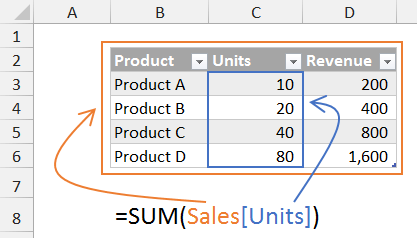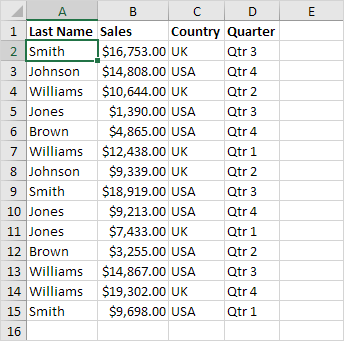

Next time you’re working with a spreadsheet, try selecting your data and pressing CTRL-L. They’ve changed the way I work with Excel for the better. Tables save us time and effort and they’ve been around for a while.
EXCEL CAMPUS HOW TO USE TABLES IN EXCEL UPDATE
If you’re using tables, you can extract your data from your favourite search volume tool and paste the raw CSV straight into your table.Īll of the VLOOKUPs in our example would automatically update as the column adjusted itself to accommodate the additional lines of data. Imagine the scenario – you’ve nearly finished your analysis and you remember there’s a keyword type missing from the original data set. Though it takes a small period of time to adjust yourself to this way of thinking, tables are great for SEO research applications like keyword research and many more activities. Where “Table1” is our new cell reference, “” is the Column name in which the data we’re looking for is stored, and “Table5” is the table in which we’re looking to find a match and pull through the value from column 5. This is the same query written in a table: If you only use tables to apply quick styles, its still a great feature. Instead of spending time manually styling data, you can use a table to clean up the look of your data. You can see cell references “A2”, cell ranges “$A$2:$E$11” and worksheet references “‘KW rank’!”: With a table selected, choose the Design tab on Excels ribbon and choose the Table Styles dropdown to add some style to your data. Here is a somewhat long VLOOKUP formula that can deal with the job. We can also use a keyboard shortcut to create. Press the Table button in the Tables section. Select the range of data including the column headings. My name is Jon Acampora and my goal is to help you improve your Exce. This is an example of a “pre-table” VLOOKUP. Use VLOOUP to create a unique list from given table. They’re perfect data containers and can be used as a simple data entry form. Excel Campus is here to help you learn Excel and save you time with your everyday tasks. Using a VLOOKUP as an example, let’s take a look at how formulas change the way they refer to cell ranges, other tables and columns. This process introduces bugs and errors quickly. Why? Because if you add more data, you have to manually adjust each cell reference. We don’t like cell references, especially when they apply to a large array of data. In the Format as Table dialog box, set your cell range.

First of all, a formula applies to an entire column immediately, not just in the cells you apply the formula to.Įnter a VLOOKUP formul into a column and the entire column will populate with the caluculation automatically. Try it You can create and format a table, to visually group and analyze data.

This animation shows you how to make a Table in Excel: highlight the cell in the top left hand corner, then CTRL=SHIFT with the down key to highlight, then CTRL+L to create table.Īpart from the obvious differences in formatting, tables become quite powerful for two reasons.


 0 kommentar(er)
0 kommentar(er)
